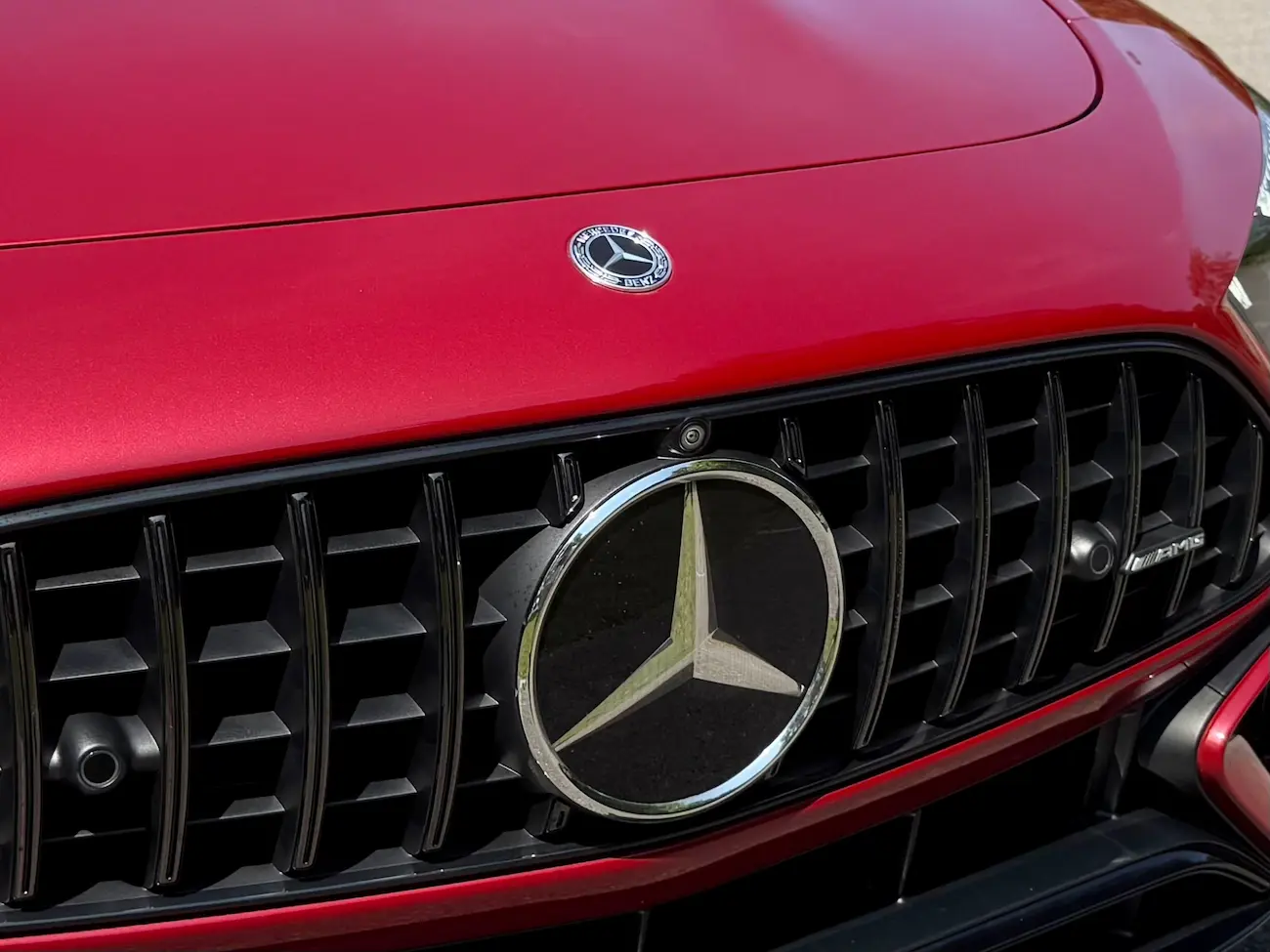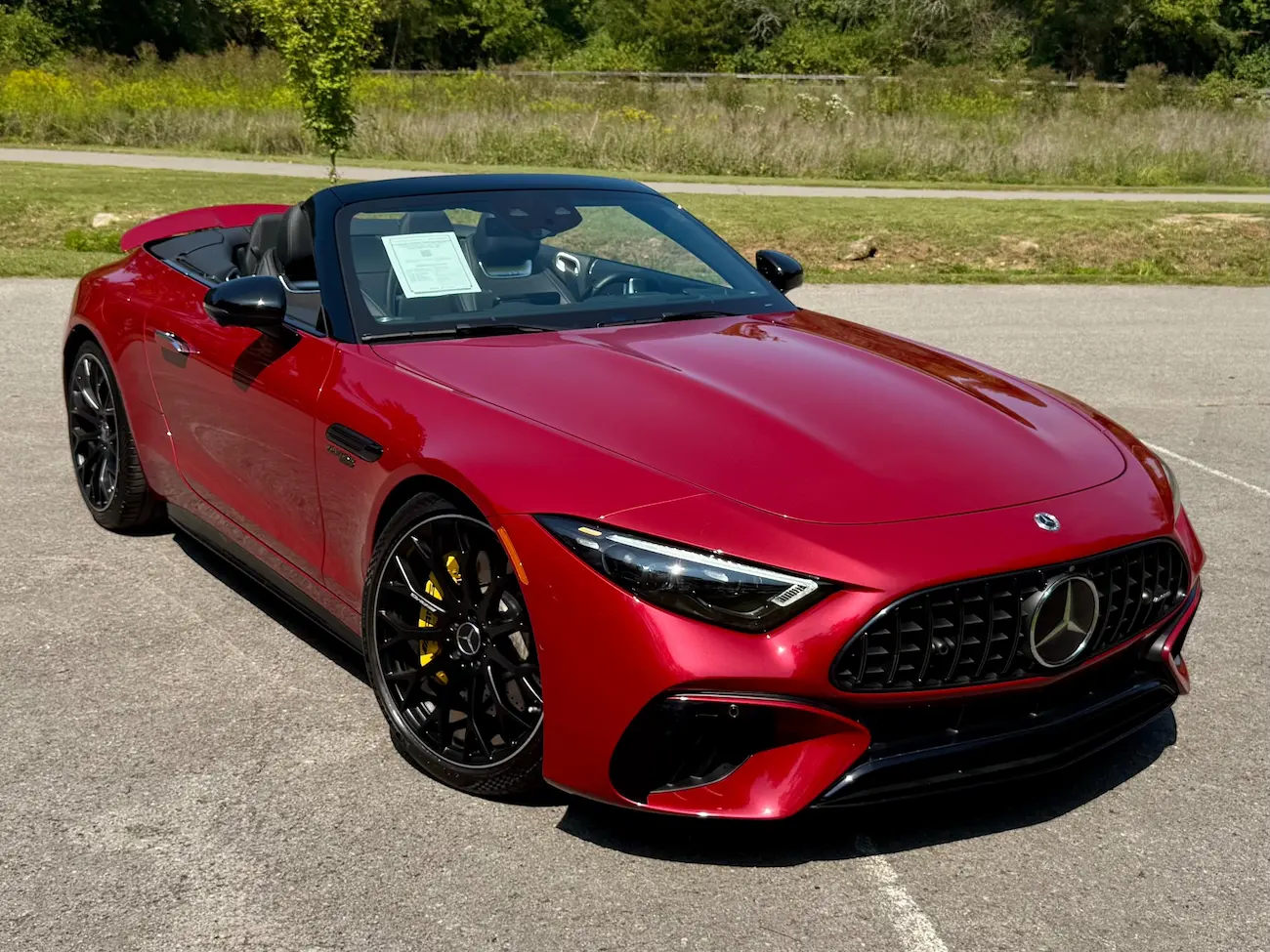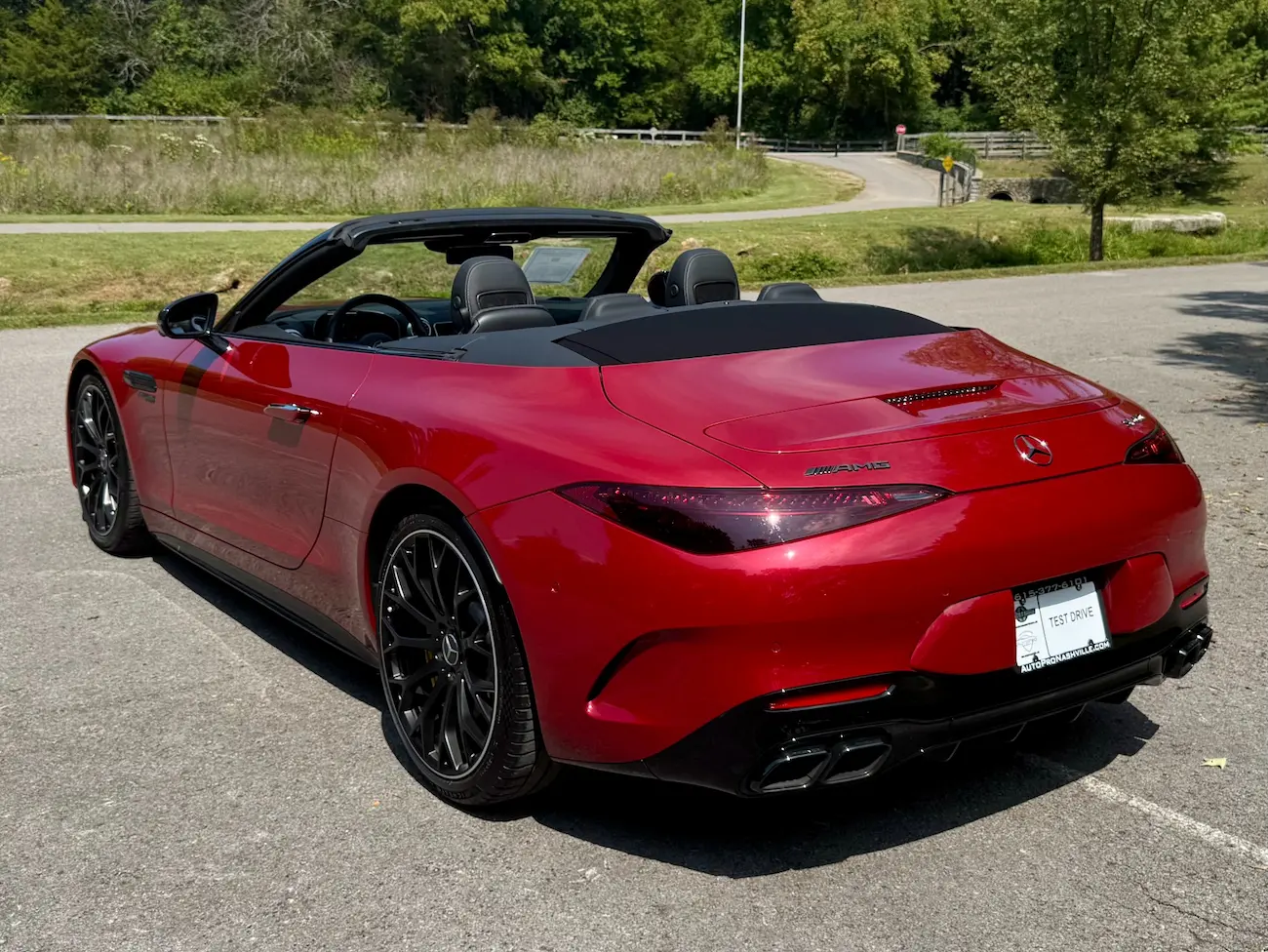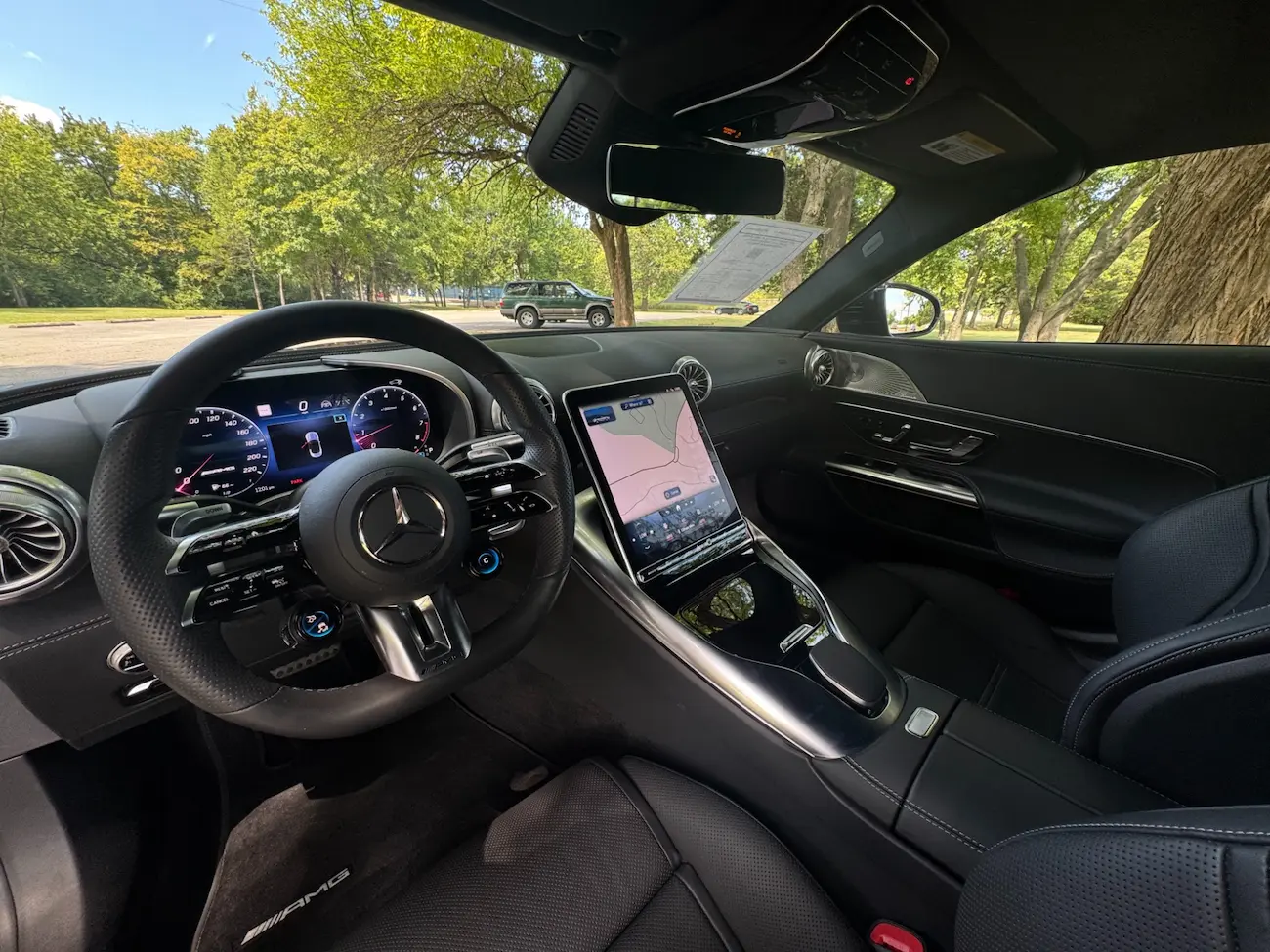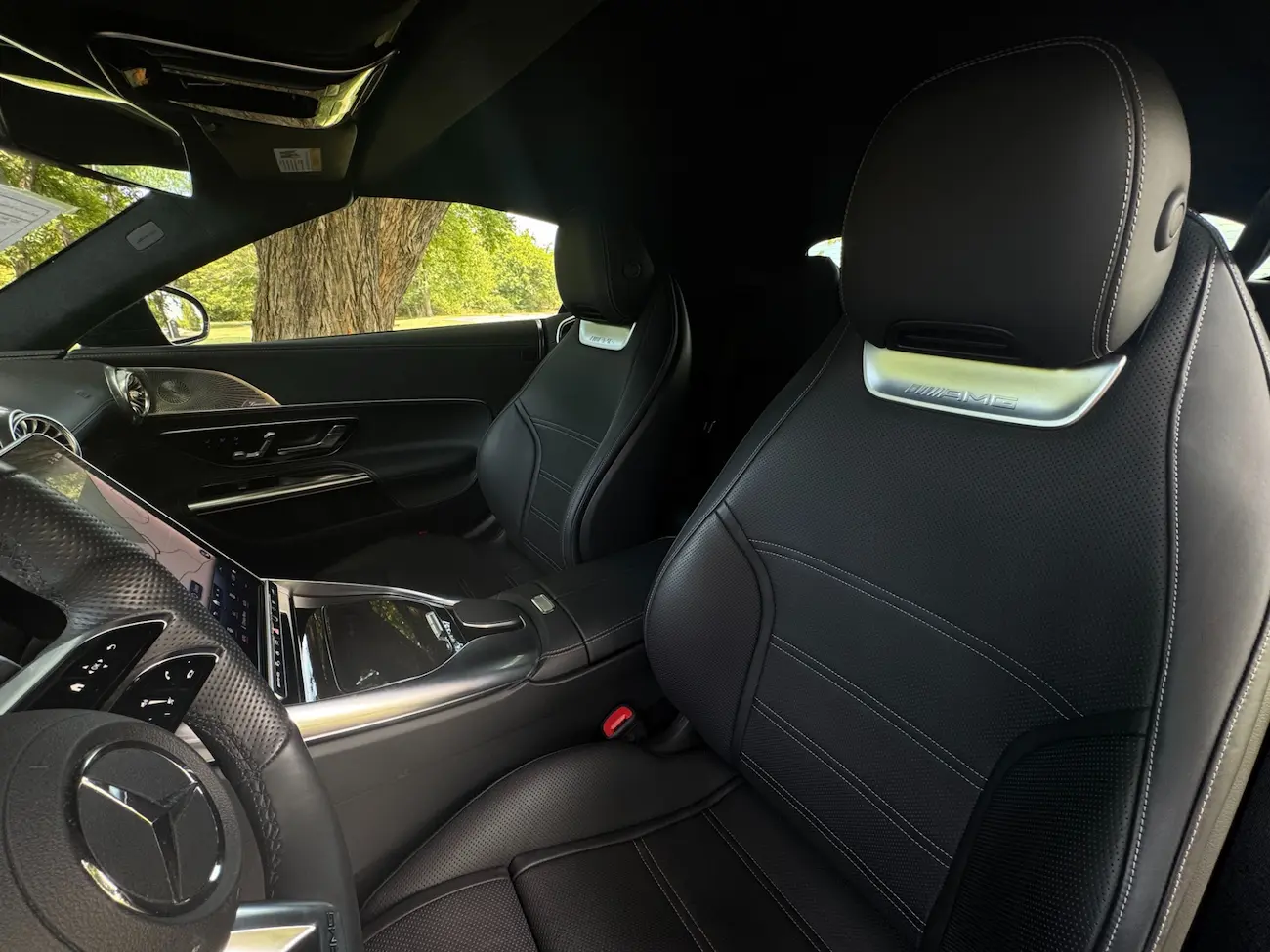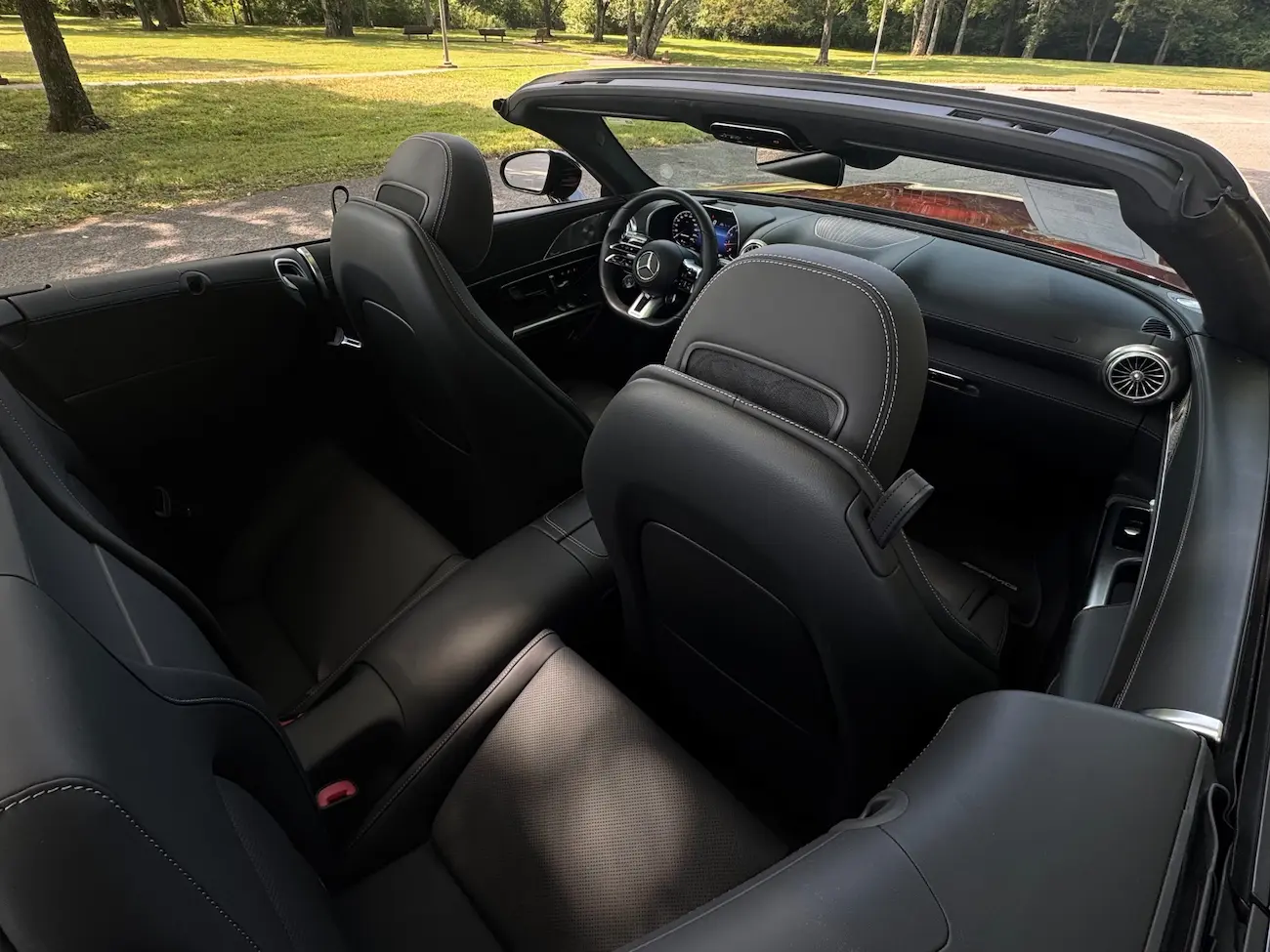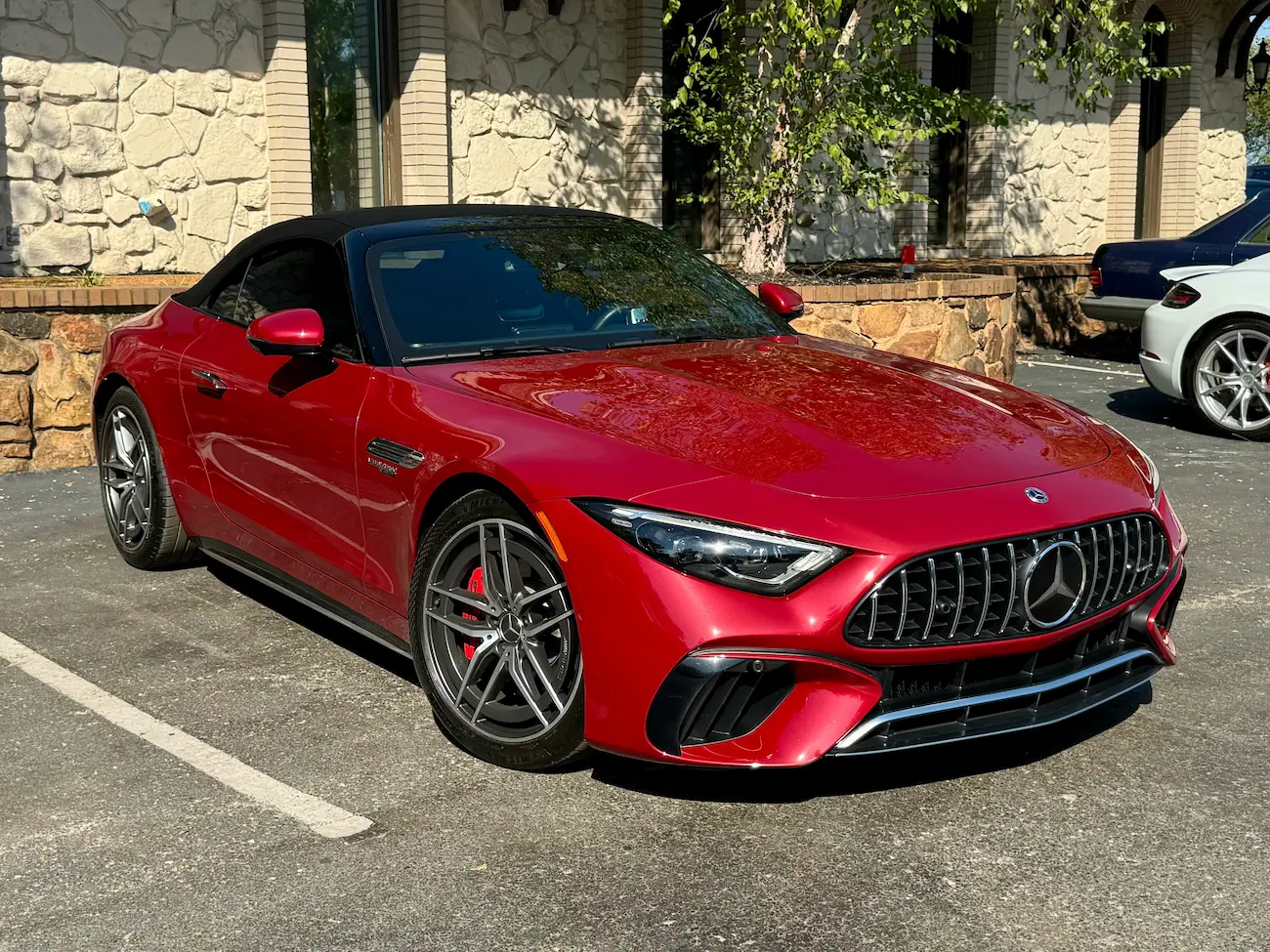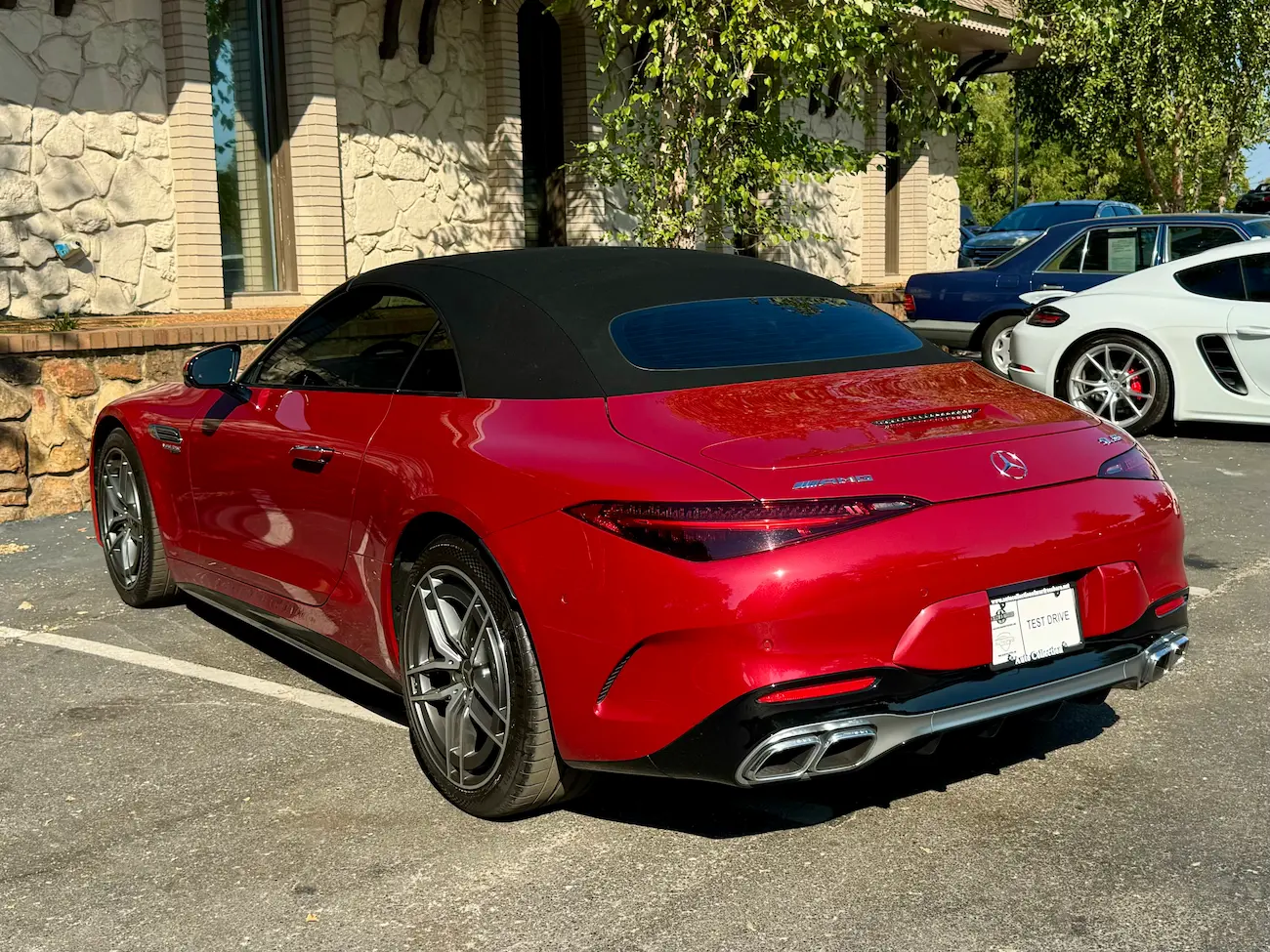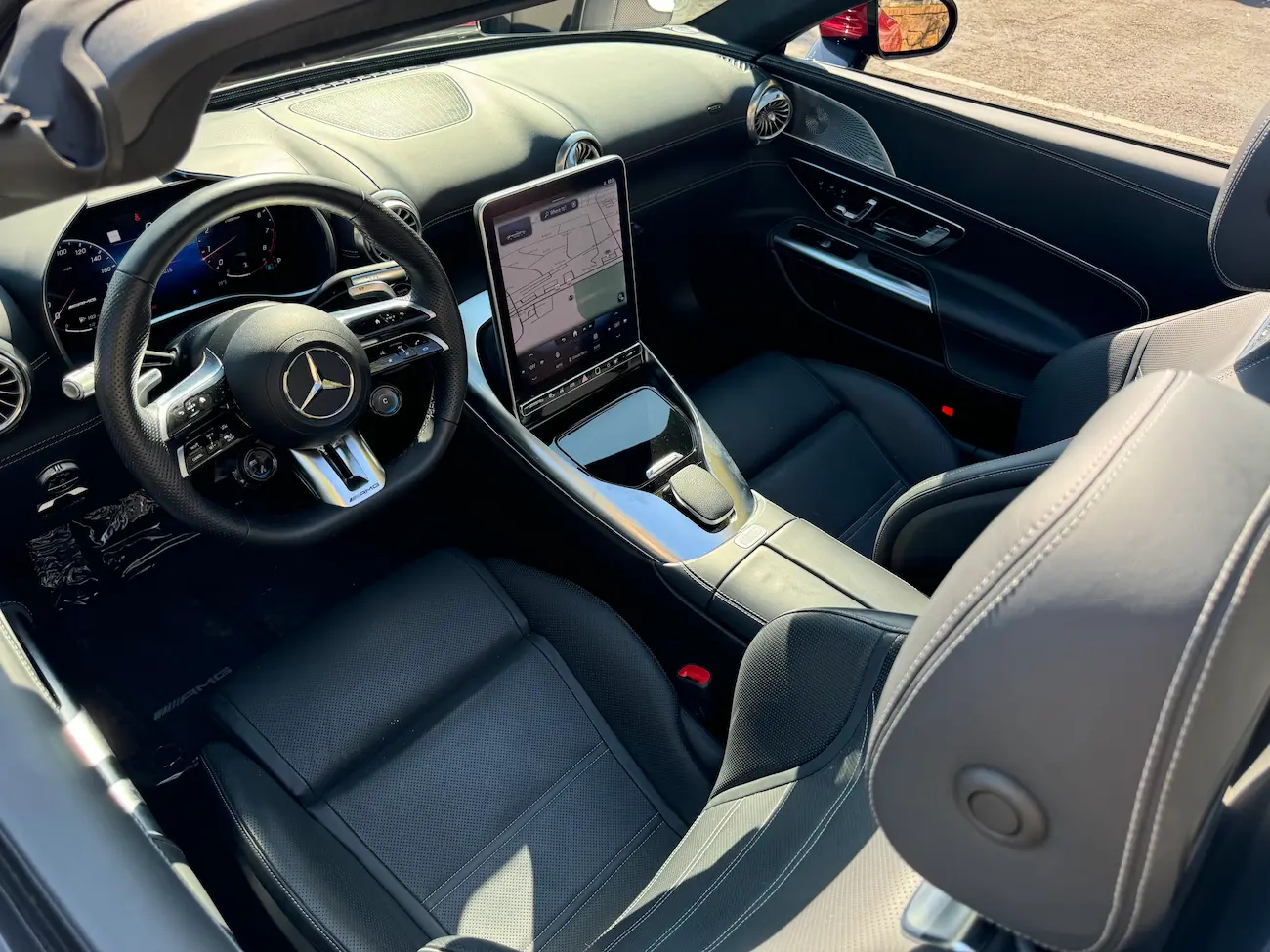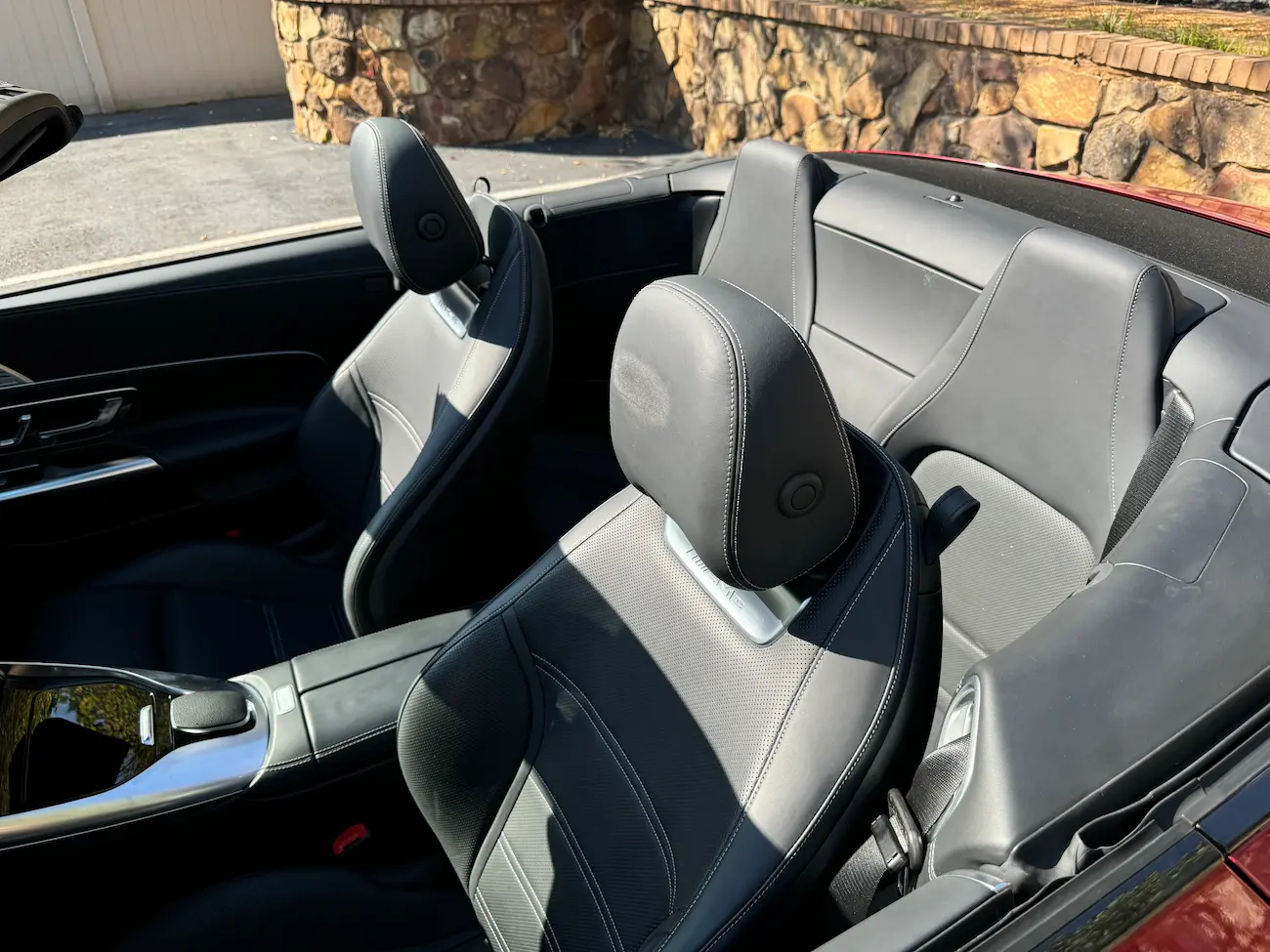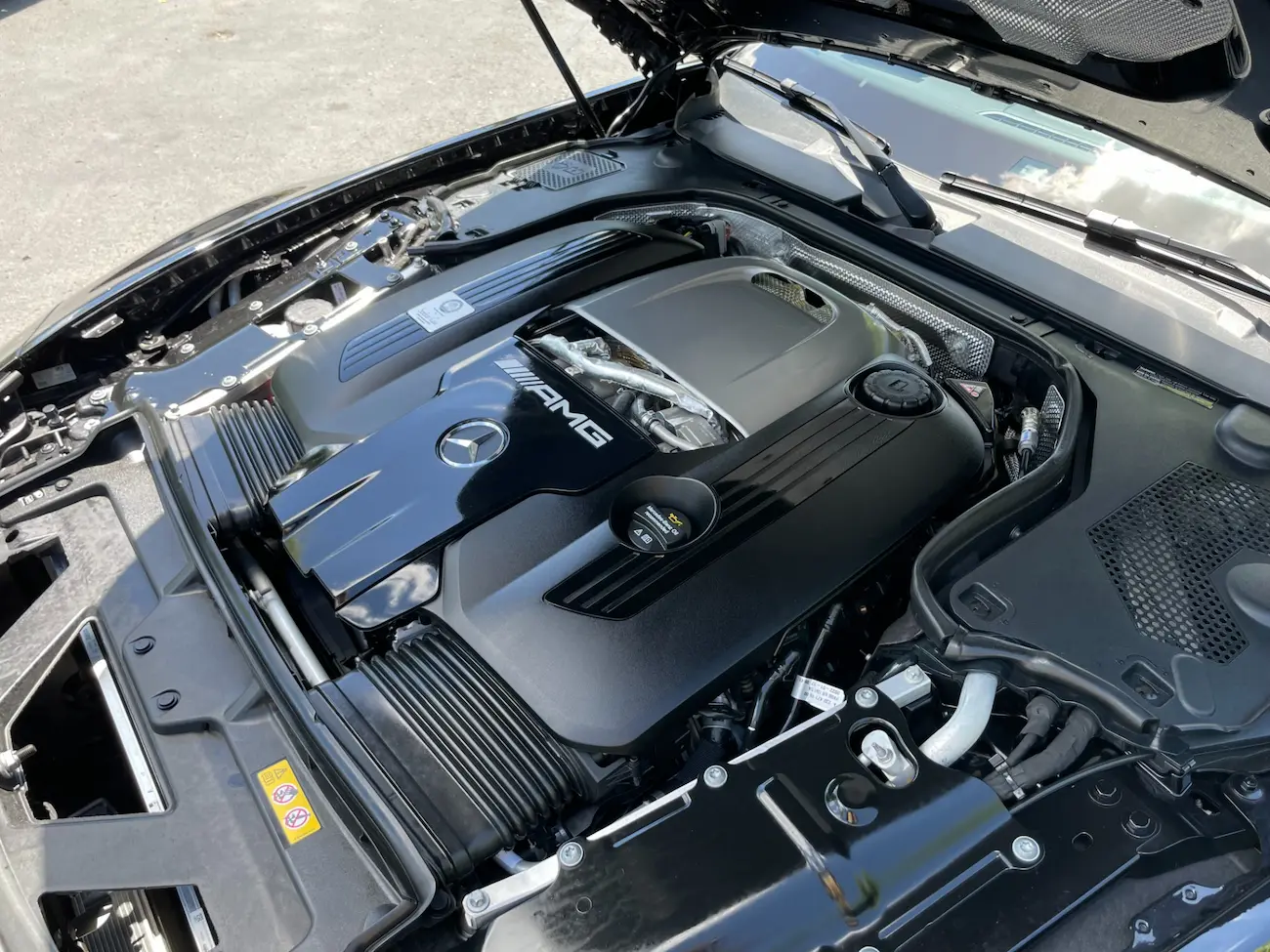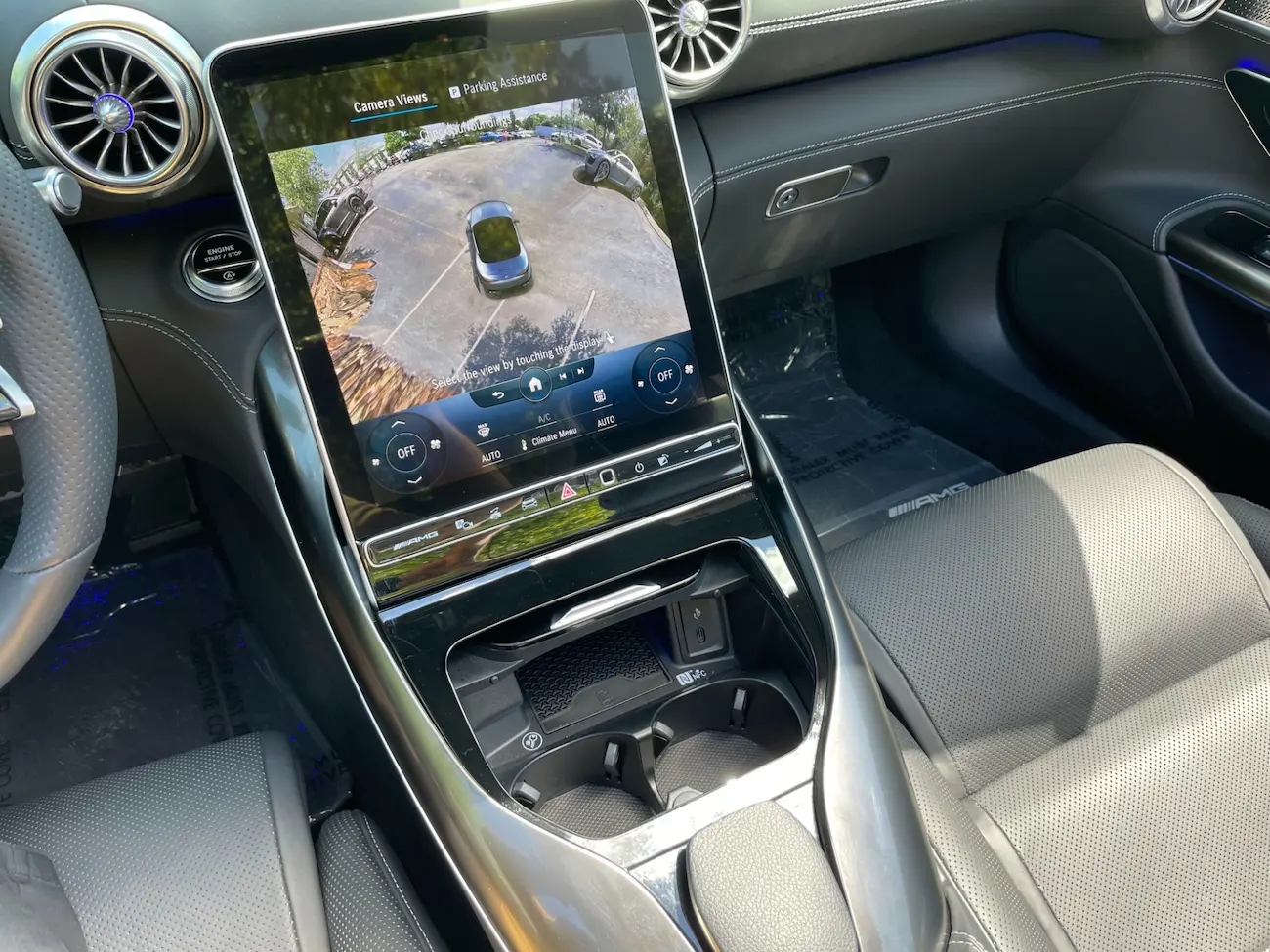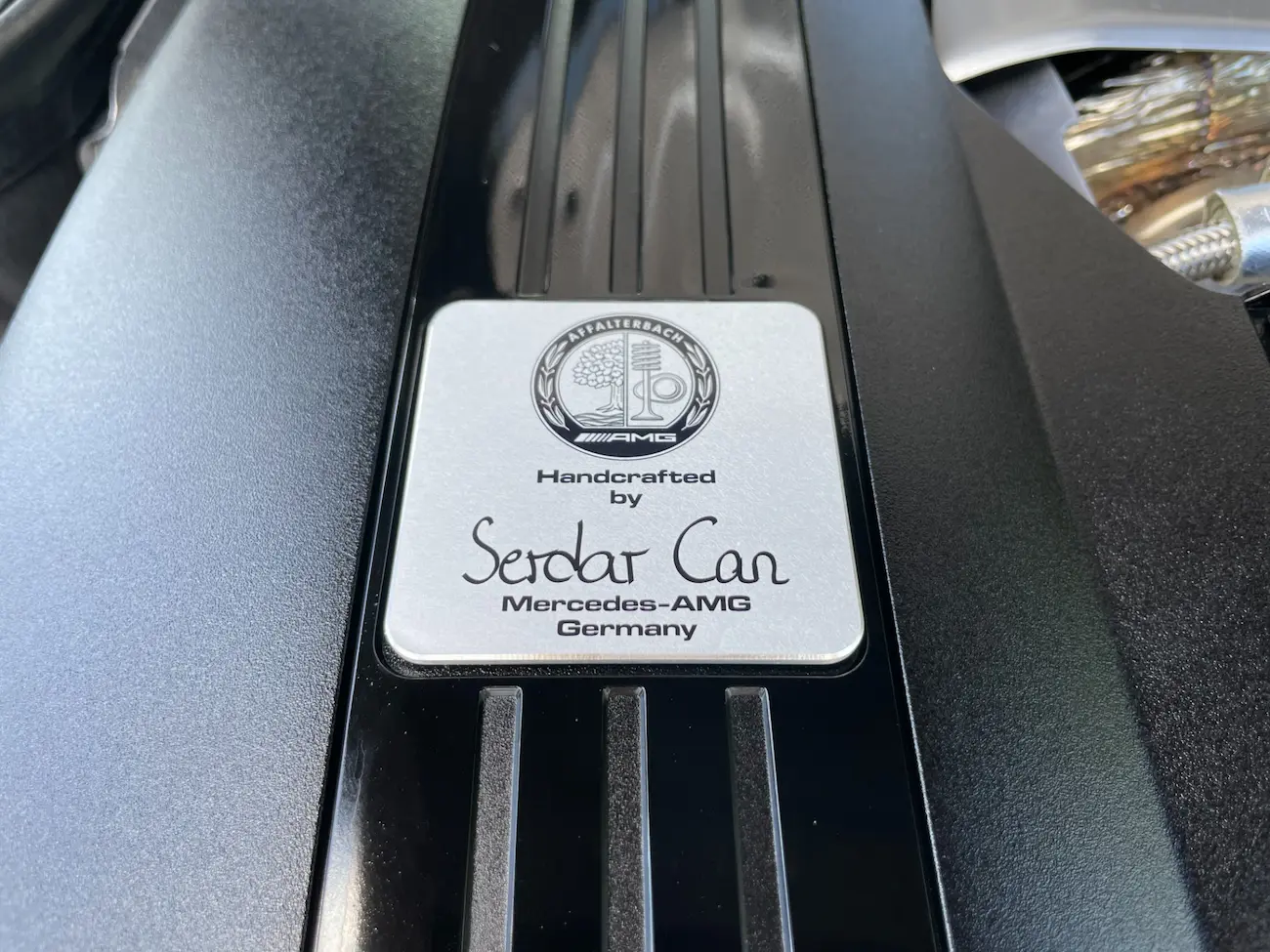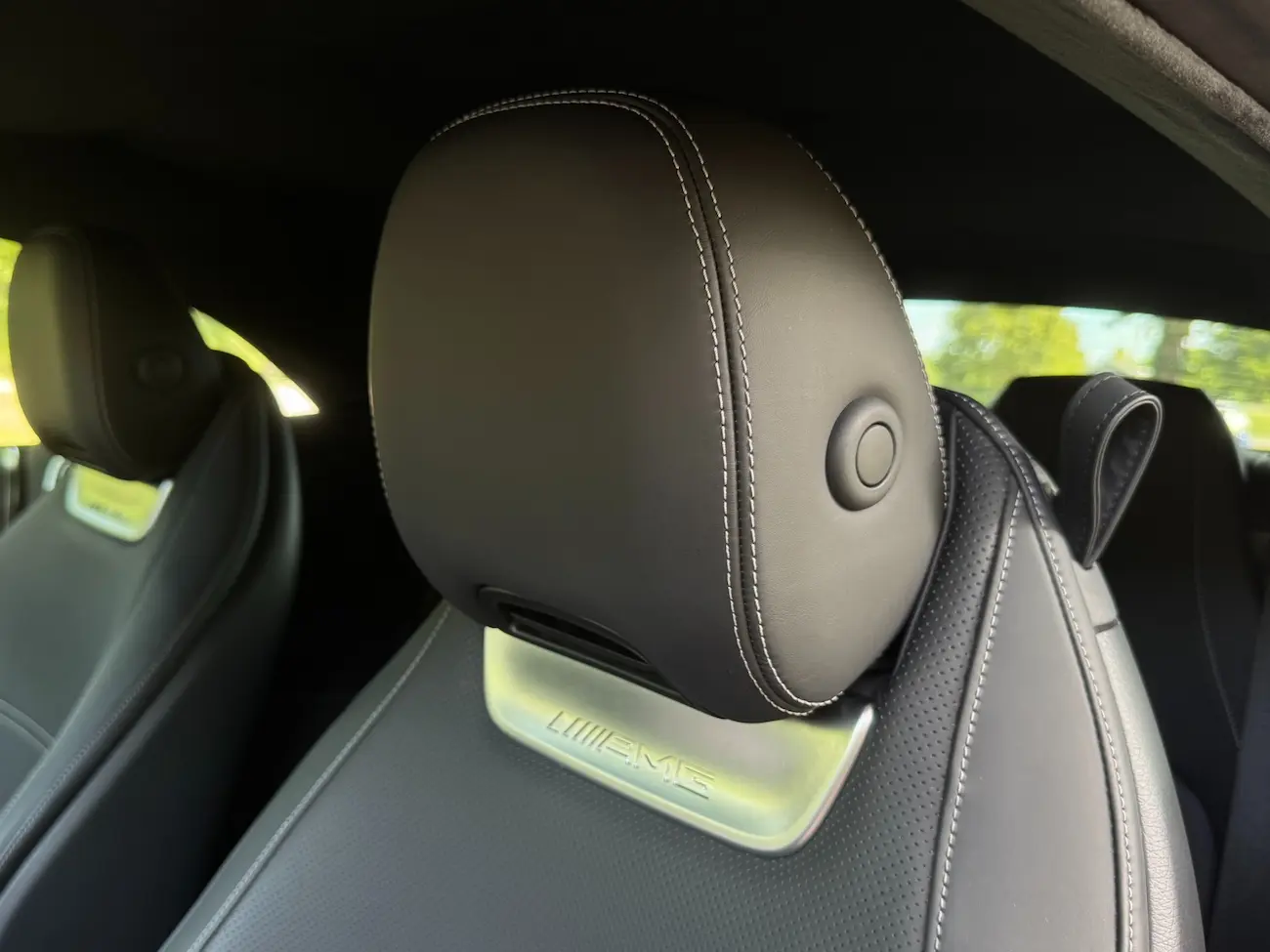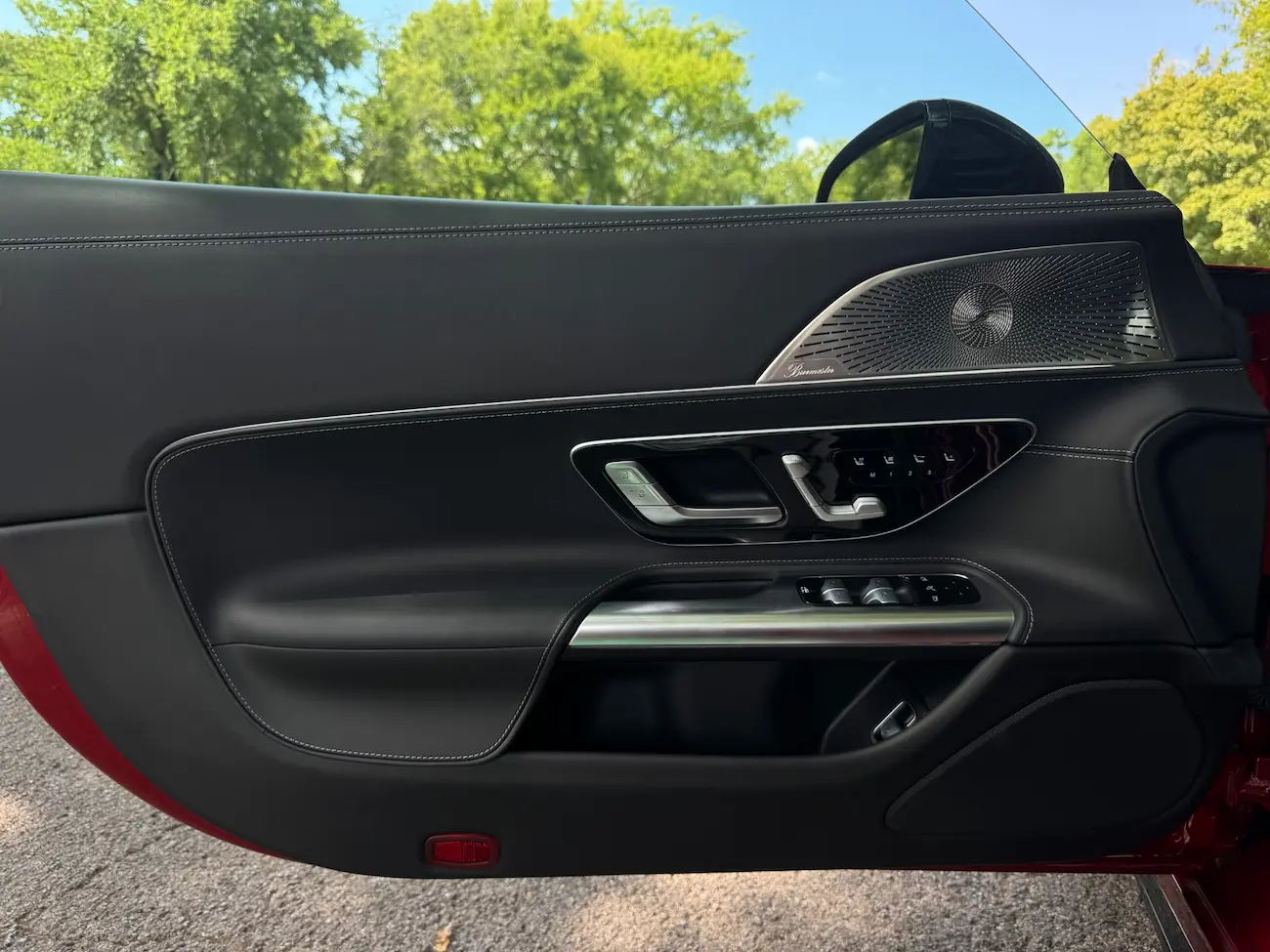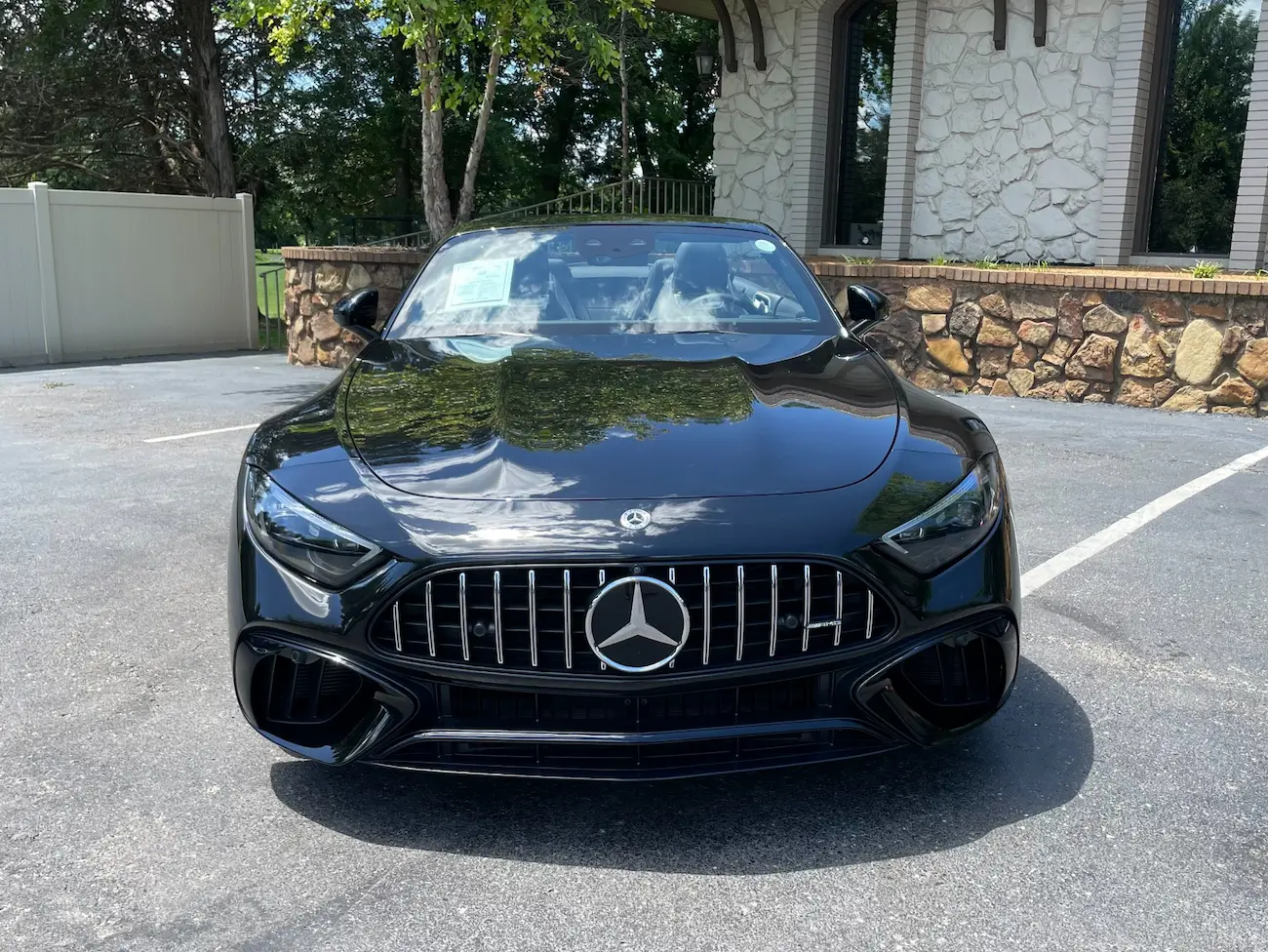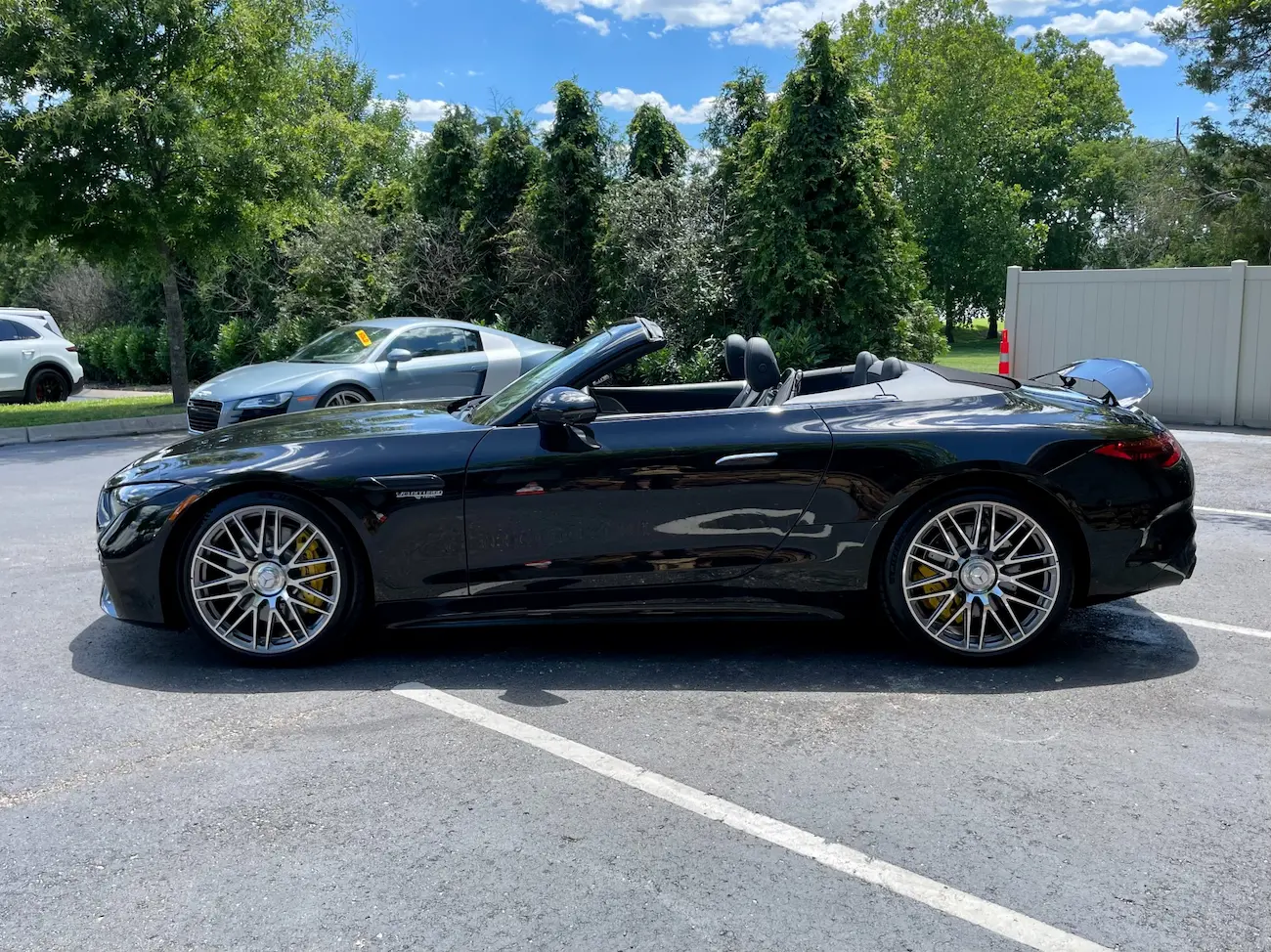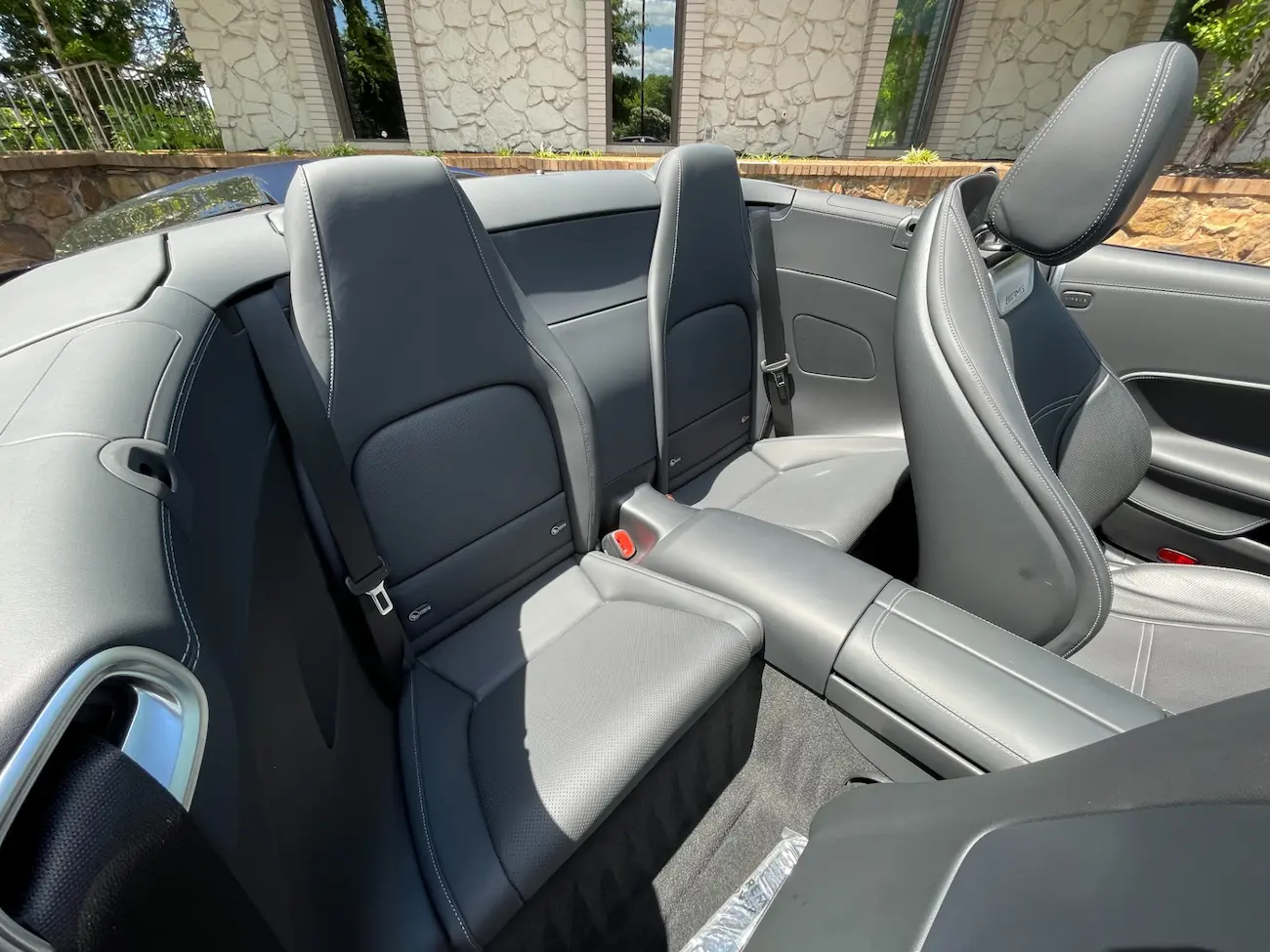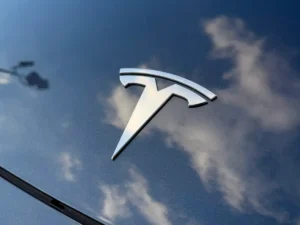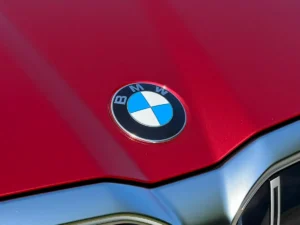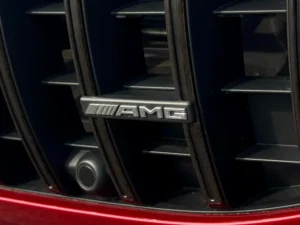What’s better than cruising with the top down, wind in your hair, and the unmistakable growl of a Mercedes roadster underfoot? That’s the SL Class in a nutshell. For decades, the Mercedes-Benz SL has symbolized style, performance, and luxury — a roadster that looks just as good parked at a café as it does carving up a highway.
Here’s the secret: buying a used Mercedes-Benz SL Class is often the smarter move. Depreciation works in your favor, letting you enjoy a six-figure car for a fraction of the cost. The key is knowing the best years to buy, which trims stand out, and what common issues to look for so you get maximum value without surprises.
SL Class Generations: History & Evolution of a Luxury Icon
The Mercedes-Benz SL Class has one of the richest legacies in the automotive world, stretching back to 1954. It all started with the 300 SL “Gullwing”, a road car born out of a racing program. Interestingly, Mercedes hadn’t even planned to build a street version — it was the vision of American importer Max Hoffman, who convinced the brand that wealthy postwar U.S. buyers were hungry for something equal parts exotic and luxurious. He was right.
Now, about that “SL” badge. Officially, it stood for Sport Leicht (Sport Light) — although Mercedes sometimes called it Super Leicht. The debate went on for decades, until a rediscovered press release from the early 1950s confirmed “Super Leicht” as the intended definition. Either way, the message was clear: lightweight, athletic, and elegant.
From There, the SL Class Evolved Across Generations
Over the decades, the SL Class has reinvented itself time and again — each era bringing its own blend of style, technology, and personality while staying true to the car’s grand touring spirit. Here’s how the story unfolds:
- 1950s–60s: The “Pagoda” SL became iconic for its unique concave hardtop and refined driving manners.
- 1970s–90s: The long-running R107 and R129 models blended comfort with understated class, becoming the default dream car of executives and movie stars alike.
- 2000s (R230): Technology took center stage, with retractable hardtops, active suspension, and luxury tech that was ahead of its time.
- 2010s (R231): Sharper styling and more AMG influence made the SL feel sportier while still being a comfortable grand tourer.
- 2022–Present (R232): Reintroduced exclusively as the Mercedes-AMG SL, the latest generation goes back to a fabric soft top (lighter and sleeker than the folding hardtop it replaces) and adds tiny rear seats — more parcel shelf than people mover, but still a nod to usability. Engine options range from a turbo four to fire-breathing twin-turbo V8s, capped by the SL63 S E Performance hybrid with a staggering 805 horsepower.
In short, the SL Class has always straddled two worlds: part boulevard cruiser, part sports machine. It’s a car that can feel equally at home devouring backroads or gliding through city streets, all while looking effortlessly glamorous.
Want to dive deeper into the brand’s legacy? Check out our guide: Unveiling the Luxury and Performance of Mercedes-Benz at AutoPro Nashville for a complete look at Mercedes-Benz history and standout models.
2025 Mercedes-AMG SL Class Specs, Trims & Features
The SL Class has been around for seven decades, but for buyers today, it makes the most sense to look closely at the 2025 lineup. Why? Because Mercedes has fully modernized the SL under the AMG banner, blending high-tech luxury with serious performance. Earlier models are attractive in the used market, but the current SL sets the benchmark that defines what you’re actually shopping for when comparing trims.
We’ll start by breaking down the 2025 trims in detail, since that’s the newest and most advanced version on sale. After that, we’ll take a closer look at how the SL Class has evolved from 2022 to 2024 — so used buyers can see what changed year by year and decide which model makes the most sense.
Mercedes offers the 2025 SL Class in a range of trims that climb from “refined and approachable” to “hold onto your driving gloves.” Here’s what each brings to the table:
SL43 — The Gateway Roadster
- Engine: 2.0L turbocharged inline-four with mild-hybrid assist, 375 hp.
- Performance: 0–60 mph in about 4.8 seconds — quick, but with a balanced, daily-driver feel.
- Features: AMG styling, MBUX infotainment with tilting 11.9-inch touchscreen, soft-top convertible, massaging seats, standard AWD.
- Interior & Design Notes: Clean AMG look, leather upholstery, and a driver-focused cabin that feels upscale without being overwhelming.
- Why it matters: The SL43 proves that an entry-level SL is still a luxury sports car, not a compromise.
SL55 — Same, But Turned Up
- Engine: 4.0L twin-turbo V8, 469 hp.
- Performance: 0–60 mph in 3.8 seconds, thanks to AMG-tuned chassis.
- Features: Everything from the SL43, plus AMG Performance 4MATIC+, upgraded brakes, adaptive suspension, throatier exhaust.
- Interior & Design Notes: Sportier AMG touches (badging, stitching, trim), plus more customization through optional MANUFAKTUR colors.
- Why it matters: The sweet spot — plenty of power without six-figure supercar excess.
SL63 — The AMG Halo
- Engine: 4.0L twin-turbo V8, 577 hp.
- Performance: 0–60 mph in 3.5 seconds — supercar territory.
- Features: Everything from the SL55, plus AMG Active Ride Control, dynamic engine mounts, aerodynamic upgrades.
- Interior & Design Notes: Alcantara and carbon trim options, higher-grade leather, and a more aggressive AMG design package.
- Why it matters: Outrageous performance paired with true grand-touring comfort.
SL63 S E Performance — The Apex Predator
- Engine: Twin-turbo V8 + electric motor, 805 hp.
- Performance: 0–60 mph in ~2.9 seconds — hypercar territory.
- Features: Everything from the SL63, plus hybrid-specific tech, upgraded cooling, exclusive AMG hybrid details.
- Interior & Design Notes: Hybrid-specific displays in the MBUX system, exclusive trim accents, and tech-focused luxury touches.
- Why it matters: Mercedes-AMG at full force — track weapon and boulevard cruiser in one.
A Note on Features Across the Range
Regardless of trim, the 2025 SL Class comes with:
- A fabric soft top (lighter and sleeker than the old folding hardtop).
- A 2+2 seating layout (rear seats are realistically for bags, not adults).
- Massaging, heated, and ventilated front seats.
- A luxurious interior with leather, ambient lighting, and high-grade finishes that reinforce its six-figure appeal.
In short, the trims build on each other logically — from the approachable SL43 to the mind-bending SL63 S E Performance — but every SL looks and feels like a proper Mercedes roadster inside and out.
Optional Packages in Brief
Mercedes makes the SL even more customizable with a range of packages and standalone options. Keep in mind, though, that not every trim has access to every package — for example, some high-performance options are reserved for V8 or hybrid models, while lighter styling bundles are offered across the lineup. Here’s a breakdown:
- Driver Assistance Package – Adds advanced safety tech like adaptive cruise control with stop-and-go, lane-keeping assist, and automatic emergency braking. Available across most trims, but often bundled differently depending on market.
- Night Package – Gloss black exterior accents (grille, mirror caps, trim pieces) for a stealthier look. Offered widely, even on the SL43.
- Carbon Fiber Package – Carbon accents for the interior and exterior, typically available starting from the SL55 upward.
- AMG Dynamic Plus Package – Performance upgrades such as active engine mounts, race modes, and yellow brake calipers. Limited to higher trims like the SL63.
- Carbon-Ceramic Brakes – Track-ready stopping power, exclusive to the SL55, SL63, and hybrid SL63 S E Performance.
- Burmester® 3D Surround Sound – Audiophile-level audio system upgrade, available across the lineup.
- MANUFAKTUR Personalization – Bespoke paints, interior leathers, stitching, and trim choices that let you create a truly one-of-one SL. Availability depends on trim and market.
These extras don’t redefine the SL, but they let buyers shape the roadster into something sleeker, sportier, or more exclusive. For most shoppers, packages like Driver Assistance or Burmester audio add the most real-world value, while the carbon-ceramic brakes and Dynamic Plus Package are best suited for owners planning spirited track use.
Buying Guide: Choosing a Used Mercedes-AMG SL Class (2022–2025)
Buying a used luxury roadster isn’t just about finding a shiny badge — it’s about knowing what you’re getting into. The 2022–2025 SL Class is still very new, which means most cars in the used market will be low mileage and still under warranty. But there are key differences year by year, plus a few ownership realities to keep in mind.
Year-by-Year Comparison & Buying Advice (2022–2025)
Not everyone is shopping brand-new, and that’s okay. Mercedes built the latest SL Class on such a solid foundation in 2022 that even earlier years of this generation remain smart options. Each model year has added refinements, new trims, or performance updates. Here’s how the SL Class has evolved — and what each year means for a used buyer:
| Model/Year | Key Highlights | What’s New vs. Prior Year |
|---|---|---|
| 2022 | Full redesign under AMG: new platform, soft top replaces folding hardtop, 2+2 seating returns, AWD standard. Launch lineup: SL55 (469 hp) & SL63 (577 hp). | First year of the new generation. |
| 2023 | Same trims as 2022, but with smoother software, expanded package availability, and minor refinements. | More stability, fewer “first-year” quirks. |
| 2024 | Introduction of SL43 (turbo 4-cyl mild-hybrid). Incremental updates across the lineup. | Expands the range with a lower-cost entry trim. |
| 2025 | SL43 gains more power (375→416 hp). Hybrid flagship SL63 S E Performance debuts with 805 hp. Fresh options for wheels, colors, and interiors. | Biggest update since relaunch — more variety and more performance. |
What Buyers Should Know Year by Year
2022 Models
- Why consider: First year of the new AMG SL platform with V8 power only (SL55 & SL63).
- Things to note: Some owners reported small software and roof quirks, but most were addressed quickly.
- Best for: Buyers who want V8 punch at a lower entry cost thanks to early depreciation.
2023 Models
- Why consider: Same core package as 2022 with smoother electronics and better option availability.
- Best for: The “safe bet” of this generation — balanced price, polish, and fewer first-year hiccups.
2024 Models
- Why consider: First year of the SL43, a more affordable four-cylinder with mild-hybrid assist.
- Things to note: It’s stylish and efficient, but some buyers may miss the traditional V8 character.
- Best for: Those who want SL luxury at a more approachable price point.
2025 Models
- Why consider: SL43 gets a healthy power bump, while the SL63 S E Performance hybrid debuts with jaw-dropping 805 hp.
- Things to note: Being brand-new, prices will still be high on the used market.
- Best for: Collectors or enthusiasts chasing the most powerful SL ever built.
Common Issues & Ownership Notes
The 2022–2025 SL Class hasn’t been around long enough to develop widespread used-car horror stories, but here are things worth knowing:
- Roof & Electronics: As with past SLs, the fabric top and electronics are complex systems. Make sure the roof operates smoothly and check for any stored error codes.
- Software & Infotainment: MBUX is powerful but updates frequently — ask if the car’s software has been kept current.
- Tires & Brakes: These are high-performance cars; AMG tires and brakes wear faster than average and replacements are expensive (especially carbon-ceramic setups).
- Hybrid Tech (2025 SL63 S E Performance): Cutting-edge but new — long-term ownership costs are still an unknown.
Beyond the spec sheets, real-world ownership paints the clearest picture. From our own experience and from voices on sources like Edmunds’ Mercedes-Benz SL-Class Review, the consensus is clear: the SL balances luxury and performance. Owners often praise the solid build quality, V8 power, and surprising daily usability. Costs can be higher, but the experience justifies it.
Maintenance & Running Costs
Owning a used SL is more about maintenance than repair (at least in these newer years). Expect:
- Annual service: $1,000–$2,000 depending on mileage and trim.
- Tires: Performance rubber can run $1,200–$2,000 per set, and may wear quickly if driven aggressively.
- Brakes: Standard AMG brakes are pricey; carbon-ceramic upgrades are even more so, though they last longer.
- Fuel: V8 trims are thirsty, while the SL43 and hybrid SL63 balance performance with better efficiency.
What to Look for When Buying Used
- Warranty Coverage: Many 2022–2023 cars are still under original factory warranty — check transferability. Extended coverage is a strong plus.
- Service Records: Make sure the first few services were done at the dealership. Skipping early maintenance can affect resale and reliability.
- Packages & Options: Driver Assistance, Night Package, and Burmester audio add value and appeal. MANUFAKTUR trims with unique interiors/colors may hold value better.
- Depreciation Sweet Spot: 2022 and 2023 models usually offer the best balance between price and features.
- Test the Roof & Electronics: Operate the soft top multiple times; look for leaks, noises, or hesitation.
- Mileage vs. Age: Since these are still new, most used SLs will be low mileage. Focus more on condition, options, and warranty than odometer numbers.
Best Years to Buy
- 2017–2019 SL450/SL550 (R231 facelift): Updated infotainment and styling, but still affordable compared to brand-new.
- 2023 SL55 (Sweet Spot): Among the current generation, this trim delivers the best balance of AMG V8 power, luxury features, and price — avoiding first-year quirks from 2022 while costing less than the brand-new 2025 models.
Years to Avoid
- 2003–2006: First-generation retractable hardtops were plagued with hydraulic roof issues and electronic gremlins.
- 2013–2014: Styling didn’t age as well, and infotainment felt outdated quickly.
- First-year cars (like 2022): 2022 Not a true “avoid,” but as with any launch year, expect minor quirks and higher asking prices compared to 2023 models with the same equipment.
Competitive Analysis: SL Class vs. Rivals
Shopping for a luxury roadster often comes down to head-to-head matchups: SL Class vs Porsche 911 Cabriolet, SL Class vs BMW 8 Series Convertible, SL Class vs Jaguar F-Type, or even SL Class vs Aston Martin Vantage Roadster. Each car offers a different balance of performance, luxury, and everyday usability. The Mercedes-AMG SL Class sits in the middle ground — more comfortable than a Porsche 911, more technologically advanced than a Jaguar F-Type, and more usable day-to-day than an Aston Martin Vantage. Below, we break down the SL Class against its main rivals so you can see where each has an edge.
| Model | Strengths | Weaknesses |
|---|---|---|
| Mercedes-AMG SL Class | Wide trim range (SL43 to SL63 S E Performance), strong luxury + performance blend, AWD standard, cutting-edge hybrid flagship, refined soft top. | Wide trim range (SL43 to SL63 S E Performance), strong luxury + performance blend, AWD standard, cutting-edge hybrid flagship, refined soft top. |
| Porsche 911 Cabriolet | Benchmark handling, lighter and more agile, strong resale value, broad enthusiast appeal. | Pricier options, less luxurious ride, smaller cabin, not as plush as SL. |
| BMW 8 Series Convertible / M8 | Sporty handling (especially M8), strong infotainment, competitive pricing vs. SL. | Interior less special, rear seats also tight, not as iconic as SL. |
| Jaguar F-Type Convertible | Distinctive styling, engaging V8 soundtrack, lower starting price. | Reliability concerns, limited tech, smaller cabin/trunk, model nearing end of lifecycle. |
| Aston Martin Vantage Roadster | Exotic looks, exclusivity, strong performance, emotional appeal. | Higher cost to maintain, less tech and comfort, limited dealer network. |
Verdict
When comparing the SL Class vs Porsche 911 Cabriolet, BMW 8 Series Convertible, Jaguar F-Type, and Aston Martin Vantage Roadster, it becomes clear that each competitor leans into a different strength. The Porsche 911 Cabriolet sets the benchmark for agility and driver engagement, while the BMW 8 Series emphasizes sporty handling at a slightly lower cost. The Jaguar F-Type brings dramatic styling and character, and the Aston Martin Vantage Roadster offers exclusivity and exotic appeal. The SL Class doesn’t outdo any of these rivals in their specialty areas, but it uniquely blends luxury, performance, advanced technology, and everyday usability — making it the most versatile option for buyers who want a grand touring roadster that can do it all without compromise.
For another perspective on how the Mercedes-AMG SL compares to rivals like the Porsche 911 Cabriolet, check out Car and Driver’s SL-Class Review.
Why Buying Used SL Makes Sense
One of the biggest advantages of considering the SL Class on the used market is depreciation. Like most high-end luxury cars, the SL loses a significant portion of its value in the first few years, which means smart buyers can step into a six-figure car for far less. Here’s what you can expect:
- Older Generations (2000s R230): $15,000–$30,000, though maintenance can be high.
- Mid-2010s SL450/SL550 (R231 facelift): $35,000–$55,000, a strong value for modern features.
- Current Generation (2022–2025 R232): $80,000–$150,000 depending on trim, mileage, and options — a steep discount compared to new MSRPs that push well above $150k.
In short, depreciation works in your favor. A carefully chosen used SL Class delivers timeless design, AMG performance, and luxury roadster presence without the sting of the brand-new price tag.
Dealership Guidance Section
When shopping for a used luxury car, the dealership you choose matters almost as much as the model itself. Look for:
- Warranty Options: Extended coverage brings peace of mind.
- Transparent History Reports: Carfax, service records, and inspection reports are non-negotiable.
- Financing Flexibility: A good dealership offers solutions, not roadblocks.
- Reputation: Word of mouth and reviews tell you who takes care of their customers.
AutoPro Nashville stands out by checking all these boxes. With a curated selection of luxury cars and a customer-first approach, they make buying a used Mercedes-Benz SL Class as smooth as its retractable hardtop.
Explore our used Mercedes-Benz SL Class inventory and experience timeless luxury for yourself.
Is the Mercedes-Benz SL Class reliable as a used car?
Yes, newer models (2022 onward) are generally reliable since they’re still under factory warranty. Older generations (like 2003–2006) had hydraulic roof and electronics issues, so those should be approached with more caution.
Which is the best SL Class trim to buy used?
The SL55 is often the best balance of performance, luxury, and value. It delivers V8 power without the extreme costs of the AMG flagship trims.
What is the best year for a used Mercedes-Benz SL Class?
- Classic: 1996–2002 R129 for timeless design and reliability.
- Modern: 2009–2012 SL550 for value and features.
- Current generation: 2023 SL55, as it avoids first-year quirks and balances cost with features.
How much does it cost to maintain a used SL Class?
Expect $1,000–$2,000 annually for regular service. High-performance trims with AMG brakes, tires, or carbon-ceramic systems can be significantly more expensive.
What is the average used price of the Mercedes-Benz SL Class?
- Older models (2000s): $15,000–$30,000 depending on condition.
- 2010s facelift models: $30,000–$50,000.
- 2022+ AMG SL: $80,000–$150,000 depending on trim and options.
